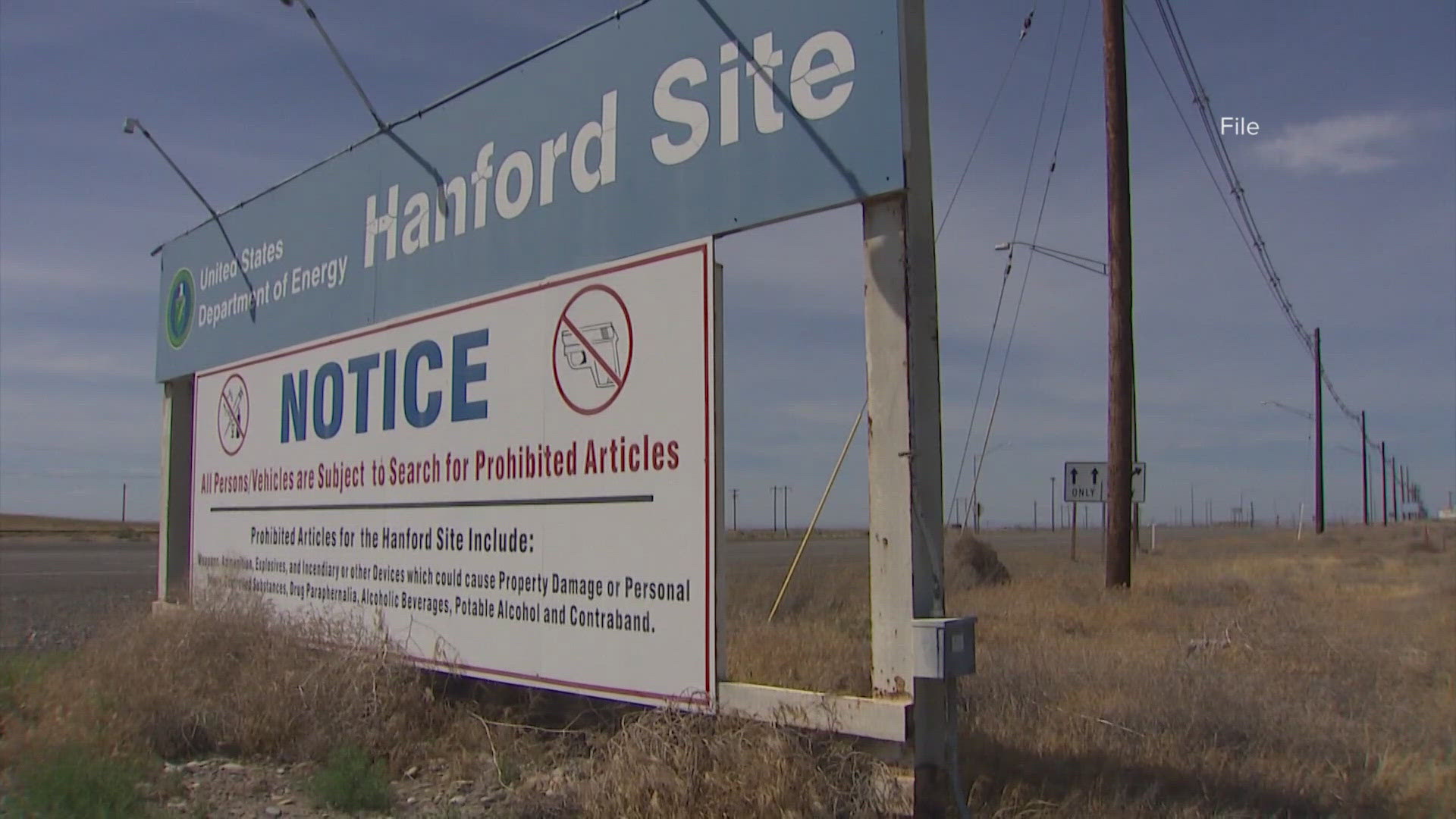SPOKANE, Wash. — A spokesperson from the Hanford Nuclear Site said on Thursday morning that radioactive waste from the Hanford Nuclear Site will travel through Spokane in 2025.
The site communications representative did not confirm specific route information but said that the Washington Ecology Department wrote a letter to Spokane Mayor Lisa Brown confirming that the transportation route would go through Spokane.
In September, Mayor Brown wrote a letter to the U.S. Department of Energy, U.S. Environmental Protection Action and the State of Washington opposing the plan that "could send millions of gallons of hazardous waste through the City of Spokane."
The city said hazardous waste would be shipped through Spokane from the Hanford Nuclear Site to Andrews, Texas and Clive, Utah in liquid form inside government-regulated totes.
"It is the mayor’s understanding that should an initial transport of 2,000 gallons be successful, these agencies plan to transport millions more gallons of hazardous liquid waste through Spokane by rail or truck," the city said in a press release sent to KREM 2 in September.
The U.S. Department of Ecology sent a letter to Spokane Mayor Lisa Brown responding to the letter she sent to them a few weeks ago. In the letter the Department of Ecology explained the first 2000 gallons is the only waste that is set to be transported through Spokane. In the letter, the Department of Ecology said, "There has been a misunderstanding about the shipment of treated waste and a conflation between a research and development project and long-term cleanup plans, which have yet to be determined."
The extra waste that Mayor Brown was speaking of is also from the Hanford site. The Department of Ecology says the work to move the waste will start no earlier than 2028. The treated waste will be grouted, either at the Hanford site or another location, then ultimately disposed of offsite. The letter goes on to say, "At this time, Energy has not made a decision on where to grout the waste from the 22 tanks, nor has Energy determined potential routes to transport the waste from Washington to disposal sites in Texas and/or Utah."
The Hanford communications representative says the waste is treated, low-level waste and will be transported in Washington State Department of Transportation-approved containers in two 1,000-gallon shipments.
In a fact sheet provided by the Hanford site, they say more than 2 billion tons of hazardous waste is safely transported around the U.S. each year.
The sheet also says that in the case of a severe accident, the highest potential radiation exposure for an individual would be less than that received from a single abdominal x-ray.

